 |
Gundia river basin in Karnataka: Hottest Hotspot of Biodiversity
|
 |
Email: mds@ces.iisc.ac.in, cestvr@ces.iisc.ac.in
1 Member, Western Ghats Task Force, Govt of Karnataka, 2 Member, Karnataka Biodiversity Board, Govt of Karnataka, 3Hon. Wildlife Warden, Bangalore District
| l | l | l |
The Biodiversity or the Biological diversity refers to the different genera and species of organisms present in an area. The degree of species diversity varies from one ecosystem to the other. India is a very rich country in terms of the rich flora and fauna present in the natural ecosystems. The presence of different kinds of forests, variability in climatic conditions, rainfall, topography are main reasons for presence of such vast biodiversity in this country. However, due to various reasons such as climate change, increasing urbanization, industrialization, encroachment, etc. the Biodiversity is facing a major threat of extinction in many parts of the world. Identifying conservation priorities is crucial due to the insufficient conservation budgets given the number of species threatened with extinction. In this context, biogeographic regions with a significant repository of biodiversity and are under the threat of anthropogenic activities are tagged as biodiversity hotspots. These regions are with high numbers of endemic species, yet their combined area of remaining habitat covers only 2.3 percent of the global land surface. Each hotspot faces extreme threats and has already lost at least 70 percent of its original natural vegetation. Over 50 percent of the world’s plant species and 42 percent of all terrestrial vertebrate species are endemic to the 34 biodiversity hotspots.
The Western Ghats is one among the 34 global hotspots of biodiversity and it lies in the western part of peninsular India in a series of hills stretching over a distance of 1,600 km from north to south and covering an area of about 1,60,000 sq.km. It harbours very rich flora and fauna and there are records of over 4,000 species of flowering plants with 38% endemics, 330 butterflies with 11% endemics, 156 reptiles with 62% endemics, 508 birds with 4% endemics, 120 mammals with 12% endemics, 289 fishes with 41% endemics and 135 amphibians with 75% endemics (http://wgbis.ces.iisc.ac.in/biodiversity/pubs/ces_tr/TR122/index.htm).
The rich biodiversity coupled with higher endemism is due to the humid tropical climate, topographical and geological characteristics, and geographical isolation (Arabian Sea to the west and the semiarid Deccan Plateau to the east). The Western Ghats forms an important watershed for the entire peninsular India, being the source of 37 west flowing rivers and three major east flowing rivers and their numerous tributaries. The stretch of Central Western Ghats of Karnataka, from 12°N to 14°N, from Coorg district to the south of Uttara Kannada district, and covering the Western portions of Hassan, Chikmagalore and Shimoga districts, is exceptionally rich in flora and fauna. Whereas the elevation from 400 m to 800 m, is covered with evergreen to semi-evergreen climax forests and their various stages of degradation, especially around human habitations, the higher altitudes, rising up to 1700 m, are covered with evergreen forests especially along stream courses and rich grasslands in between. This portion of Karnataka Western Ghats is extremely important for agriculture and horticultural crops. Whereas the rice fields in valleys are irrigated with numerous perennial streams from forested hill-slopes the undulating landscape is used to great extent for growing precious cash crops, especially coffee and cardamom. Black pepper, ginger, arecanut, coconut, rubber are notable crops here, in addition to various fruit trees and vegetables. Some of the higher altitudes are under cultivation of tea. From the point of productivity, revenue generation, employment potential and subsistence the central Western Ghats are extremely important.
Gundia River is one of the most important tributaries of river Kumaradhara originating at an elevation of about 1400 m in Saklasheshpurataluk in Hassan district. Netravathi and Kumaradhara rivers are two west flowing rivers of the Central Western Ghats in Karnataka.Gundia River is formed by the streams namely Yettinaholé and Kempholé to which the streams Kadumaneholé and Hongadahallé join in the course. The Gundia catchment region is surrounded Hemavathiriver water-shed on its right, Barapole river catchment on its left and Netravathi River on downstream side. The Gundia catchment comes under influence of the South-west monsoon in months of June to September.Thisriver basin is precariously situated along the narrow belt of unique evergreen and semi-evergreen climax and related forests, which is of two categories Dipterocarpusindicus – Kingiodendronpinnatum- Humboldiabrunonis type of low elevation (0-850 m elevation) and Mesuaferrea – Palacuimellipticum type of medium elevation (650-1400 m). This region constitutes one of the prime centers of biodiversity in the Western Ghats as itharbours nearly 36% of plant species, 87% of amphibians, and 41% of fishes, which are endemic to Western Ghats. The presence of four critically endangered and 14 endangered animal species in the region further emphasises the need for conservation of this region on priority as it provides a unique habitat and ecological niche. Recent field investigations show the presence of total 239 plant species in the region out d of which 119 are trees belonging to 88 genera and 42 families, 63 are shrubs and climbers belonging to 53 genera and 34 families and 57 are herbs belonging to 49 genera and 28 families. Along with this 54 pteridophytes belonging to 31 genera and 20 families were also recorded from this area. Endemic species such as Holigarnagrahmii, H.arnottiana, Myristicadactyloides, VateriaIndica, Gordonia obtuse, Canariumstrictum, Artocarpushirsutusetc., were found in most of the localities.
The river basin is also rich in cardamom and coffee plantations. The cardamom plantations may be considered most eco-friendly among the lot of planting activities by humans. These are virtually evergreen forests with most of the trees preserved to favour the shade and humidity loving cardamom herbs beneath. This cash crop fetches high returns while also preserving the forests and watershed. Both small and big farmers of Gundia basin are engaged in cardamom cultivation, the dried fruit per kilogram fetches almost around Rs.1500/-Considering the tangible and intangible benefits derived from fifty year old forests, value of eco-services provided by the forests in Gundia basin works out to be 195 billion Rs./year (with food and water security) while aiding the livelihood of ecosystem people.The role of cardamom plantations in preserving native vegetation has seldom been ever highlighted. The coffee estates, both small and big, like rest of central Western Ghats, constitute a major activity in the focal region. In preservation of native forest vegetation coffee is next in importance only to cardamom. In many large private holdings portions of the property are under wild vegetation. These private forests, in combination with the tree rich cardamom and coffee estates and state reserved forests make the region rich in wildlife composed of amphibians, reptiles, birds and mammals.Wild fauna that signifies the ecological sensitiveness of the region are:
- Lion-tailed macaque - Macacasilenus, is categorized as Endangered by the IUCN Red List and is endemic to the rainforests of the Western Ghats. This belongs to the Scheduled I of protected animals according to the Wild life protection act 1972.
- Travancore Flying Squirrel - Petinomysfuscocapillus, is one of the small flying squirrel and is expected to be present in some parts of the Western Ghats. This belongs to the Scheduled I of protected animals according to the Wild life protection act 1972.
- Land snail - Indrellaampulaan endemic species of the Central Western Ghats were sighted in wet forest patches of Yetinhalla dam site, Mallali waterfalls.
- Nilgiri marten - Martesgwatkinsii, is one of the largest and rarest Indian mustelids and is endemic to the Western Ghats, prefers moist and tropical rainforests with an altitude of 300 - 1200 m as its habitat. The marten is legally protected under the Wildlife Protection Act 1972 (schedule II), is listed on Appendix-III of the Convention of Trade in Endangered Species (CITES) and is categorized as Vulnerable by IUCN Red List.
- Malabar pied Hornbill - Anthracoceroscoronatus, is distributed in the forests of India and Sri Lanka. This species is frugivorous and is found to be occurring in mixed deciduous, riparian and moist deciduous forests. It has been classified as Near Threatened by IUCN Red List of Threatened Species and Scheduled I of protected animals according to the Wild life protection act 1972.
- Tiger -Pantheratigris, a keystone speciesbelongs to the Scheduled I of protected animals according to the Wild life protection act 1972. It require a large habitat to fulfill their needs but due to habitat fragmentation they are left with limited resources and often encounter human settlements leading to human-tiger conflicts. The presence of tiger pug marks in Bisle Reserve forest and cases of cattle attack in nearby areas points to the presence of tiger in this area indicating this area to be ecologically sensitive and requiring conservation.
- Elephant - Elephasmaximus,occupy very large areas and are referred as ‘Umbrella species’ also regarded as premier ‘Flagship species’ and sometimes also called ‘Keystone species’ because of their important role in ecology and environment. The Asian elephants have been described as endangered by the Wildlife Protection Act, 1972 (Appendix-1) and by Appendix 1 of the Convention of International Trade of Endangered Species of Flora and Fauna (CITES) in 1975. The Mysore Elephant Reserve was notified by the Karnataka Government in November, 2002, spanning an area of 6,724 sq.km. coveringBisle reserve forest of Gundia Basin, (vide the said GO, FEE 231 FWL 2000, 25/11/2002). It adjoins Kempholé Reserve Forest in north and Pushpagiri Wildlife Sanctuary in the south. It is an integral and important part of the Mudumalai – Nagarholle – Brahmagiri – Mathodi Corridor and Nagarhole – Malambi – Dodabetta – Hemavati Migratory Path.
The presence of endangered animals like tiger and elephants highlight the importance of these regions. However, in last three decades large scale land cover changes have occurred due to mini hydel power project, construction of a reservoir, construction of roads, monoculture plantations of ginger and rubber, etc. leading to large scale disturbance and fragmentation of natural habitats of wild animals. Due to this there have been incidents of conflicts between humans and animals like tiger and elephants in this region. Given the seriousness of human-elephant conflict and its extreme gravity in certain areas, there should be a continuing programme for containing and defusing such conflict. In this regard, it is necessary to implement the following recommendations of the Elephant Task Force (ETF) set up by the Ministry of Environment and Forests (MoEF) for mitigating Human Elephant Conflicts (Gajah, 2010).
- All the elephant corridors listed in Right of Passage: Elephant Corridors of India publication and thereby agreed to by Project Elephant and state governments should be notified as state elephant corridors by respective State Governments and declared as ecologically sensitive areas.
- The corridors should be legally protected under various laws appropriate for the state and the local context, such as for e.g. a.) Community or Conservation Reserve, b.) Declaring the corridor as high priority Ecologically Sensitive Area under Environment Protection Act (EPA) with maximum regulation of ecologically destructive activity. c.) Declaring corridor land as Reserve Forest (RF) or Protected Forest (PF) under Indian Forest Act. d.) Community forests under the Forest Rights Act. e.) Increase boundary of existing Protected Area and make corridor part of the existing Protected Area (PA).
- Land use policies in elephant habitats especially corridors must be made clear to prevent further fragmentation of habitat or escalation of elephant-human conflict. The policies should be pragmatic enough to allow the corridors to be protected. It is very important for managers to enforce them strictly and with authority.
Gundia river basin thus is a‘hottest hotspot’of biodiversity with a repository of biological wealth of rare kind, both in its aquatic and terrestrial ecosystems and indicates strongly the need for adoption of holistic eco-system management for conservation of particularly the rare and endemic fauna of the Western Ghats. Considering the ecological significance and rich biodiversity, this region is anideal candidate for Eco-sensitive region as per sub-section (1) with clause (v) of sub-section (2) of section 3 of the Environment (Protection) Act, 1986 (29 of 1986) and clause (d) of sub-rule (3) of rule 5 of the Environment (Protection) Rules, 1986 in concurrence with the provisions of the Indian Forests Act, 1927 (16 of 1927) and Forest (Conservation) Act, 1980 (69 of 1980) the Wildlife (Protection) Act, 1972 (53 of 1972) and also Biological diversity act 2002.This is imperative to prevent the erosion of Biodiversity, Ecology and associated Hydrology.The premium should be on conservation of the remaining evergreen and semi-evergreen forests, which are vital for the water security (perenniality of streams) and food security (sustenance of biodiversity). There still exists a chance to restore the lost natural evergreen to semi-evergreen foreststhrough appropriate management strategies.
Illustrations:
- Asian Elephant - Elephasmaximus
- Forest fragmentation due to mini hydel project at Kempholé
- Land snail - Indrellaampula
- Pug mark of a tiger
- Lion-tailed macaque - Macacasilenus
- Mallalli waterfalls: An ecosystem for the next generation
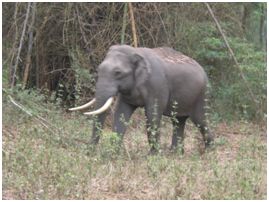 Asian Elephant - Elephasmaximus |
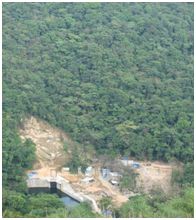 Forest fragmentation due to mini hydel project at Kempholé |
 Land snail - Indrellaampula |
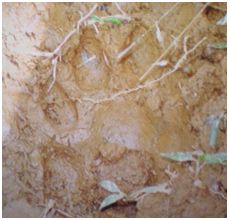 Pug mark of a tiger |
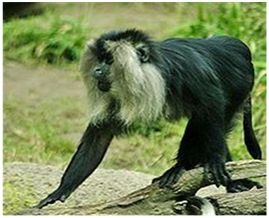 Lion-tailed macaque - Macacasilenus |
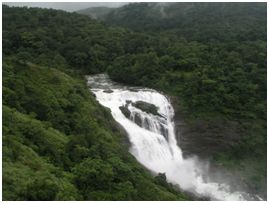 Mallalli waterfalls: An ecosystem for the next generation |
- A perennial stream in Mallalli
- Pinangadicksonii: Endemic palm of primary forest – Kaginara forest
- Bettakumriforest
- A tree clad coffee cum cardamom estate
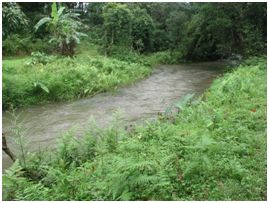 A perennial stream in Mallalli |
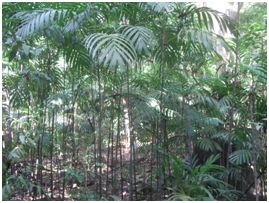 Pinangadicksonii: Endemic palm of primary forest – Kaginara forest |
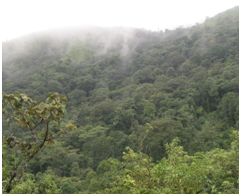 Bettakumriforest |
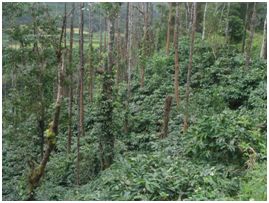 A tree clad coffee cum cardamom estate |
| * Corresponding Author : | |||
| Dr. T.V. Ramachandra Energy & Wetlands Research Group, Centre for Ecological Sciences, Indian Institute of Science, Bangalore – 560 012, INDIA. Tel : 91-80-23600985 / 22932506 / 22933099, Fax : 91-80-23601428 / 23600085 / 23600683 [CES-TVR] E-mail : cestvr@ces.iisc.ac.in, energy@ces.iisc.ac.in, Web : http://wgbis.ces.iisc.ac.in/energy |
|||
